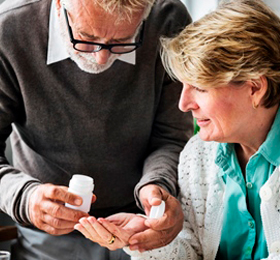
 Former First Lady Rosalynn Carter said, “You have either been a caregiver, you are a caregiver, you will be a caregiver, or someone will care for you.” There is no denying the role of caregiver can be one of the most unexpected and exhausting challenges a loved one faces, but it has also been referred to as rewarding, a blessing and an honor. The Beryl Institute and the Caregiver Action Network recently joined forces to capture the vital voices and the multitude of experiences of today’s caregivers. Together, we engaged in a dialogue with family caregivers about their experiences so we could share them in a white paper. Our goal was two-fold: to inform and stimulate the public conversation around the role caregivers play in the overall patient experience and to reinforce the value and impact caregivers have on the broader efforts in healthcare.
Former First Lady Rosalynn Carter said, “You have either been a caregiver, you are a caregiver, you will be a caregiver, or someone will care for you.” There is no denying the role of caregiver can be one of the most unexpected and exhausting challenges a loved one faces, but it has also been referred to as rewarding, a blessing and an honor. The Beryl Institute and the Caregiver Action Network recently joined forces to capture the vital voices and the multitude of experiences of today’s caregivers. Together, we engaged in a dialogue with family caregivers about their experiences so we could share them in a white paper. Our goal was two-fold: to inform and stimulate the public conversation around the role caregivers play in the overall patient experience and to reinforce the value and impact caregivers have on the broader efforts in healthcare.
Keeping Loved Ones Safe and Healthy
The roles the caregivers provided were as different and varied as the caregivers themselves. Some provided full-time care to loved ones who were completely dependent on them – physically, mentally, emotionally. Others provided transportation to and from medical appointments and or help with daily tasks and chores. Regardless, through our conversations with the caregivers, the importance of one task rose to the top: keeping their loved one safe and as healthy as possible.
Many identified the task of being a patient advocate among their most important tasks as a caregiver. As one simply stated, “Healthcare professionals generally are there to do the best that they can for your loved ones, but always remember that you are the advocate.”
Emotionally and Physically Demanding
Our conversations reinforced the challenges of caregiving are immense and can be both emotionally and physically demanding: Helping a family member shower and get dressed, cooking and cleaning for someone who can no longer perform daily tasks, mastering medical procedures, such as giving injections or cleaning feeding tubes. Often compounding this is the struggle to balance the competing demands of caregiving responsibilities with the demands of a job, family, or personal obligations.
Not surprisingly, there was no single challenge that all caregivers pointed to. One challenge identified was related to information – both how it accessed and how it is processed and understood. A second common challenge was coordinating care, be it scheduling, arranging, overseeing, and, often, performing services needed to maintain the health and well-being of the care recipient. Through the recounting of her daughter’s history, one mother underscored the importance of making sure her many specialists take into consideration her many conditions so that they don’t “fix one problem only to create another one.”
Feeling the ‘Burn’
We also learned caregiver burnout is real. Though caregiving can be a profound and moving experience, the needs of caregivers are often overlooked until it is too late. Not surprisingly, almost all the caregivers we interviewed urged other caregivers to take care of themselves as their primary and sometimes only piece of advice to new caregiver. “Only when we first help ourselves can we effectively help others,” said one caregiver.
Improving Engagement and Outcomes
The paper also shares recommendations for improving outcomes for patients and caregivers developed by Caregiver Action Network based on their work to identify 25 best practices in patient and family engagement. Key themes include:
- Listening Actively
- Creating Genuine Partnerships
- Professional Openness and Adaptability
- Discovering Opportunity in Adversity
- ‘Hard Wiring’ Patient Engagement
- Ensuring Consistency and Replicability
- Using Visuals and Other Materials to Spread Success
- Addressing Underserved Populations
You may download a complimentary copy of the white paper using promo code ENGAGING_PATIENTS at https://theberylinstitute.site-ym.com/store/ViewProduct.aspx?id=7570950.




